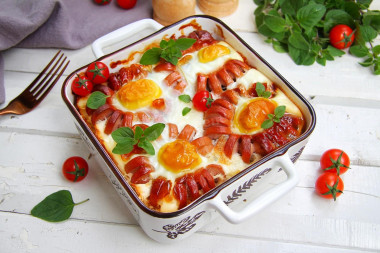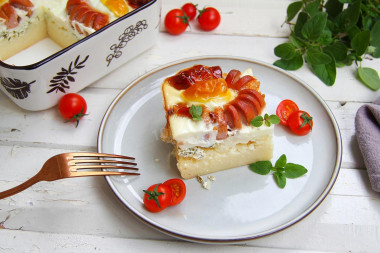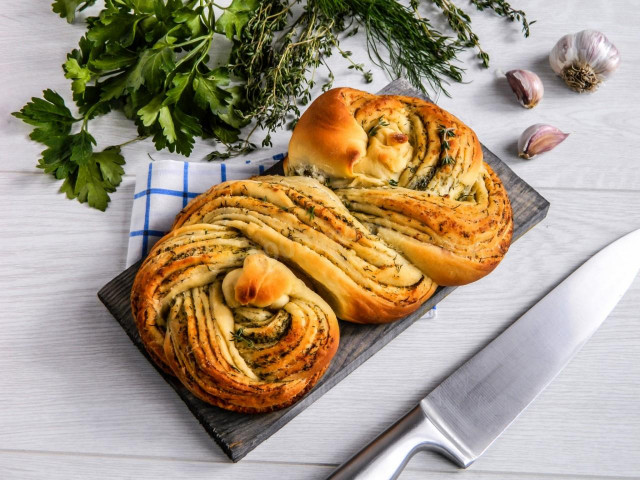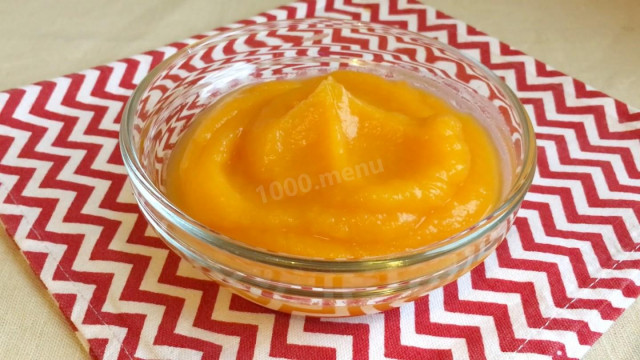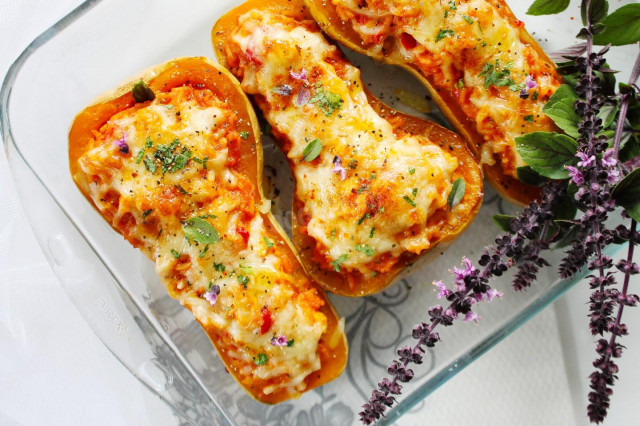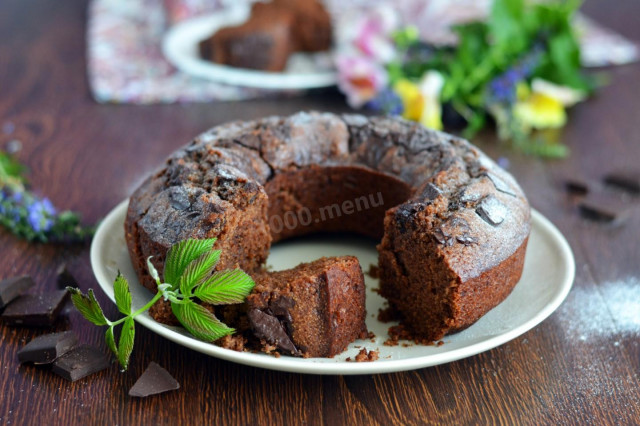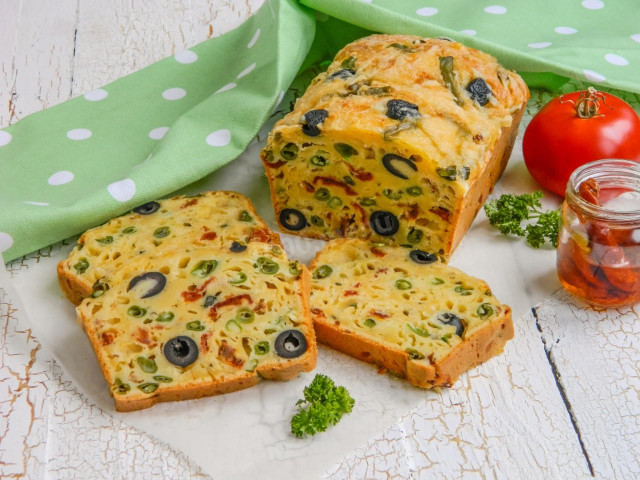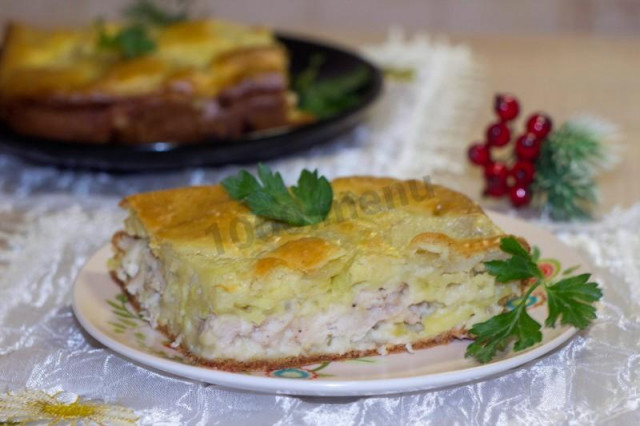Composition / ingredients
Step-by-step cooking
Step 1:
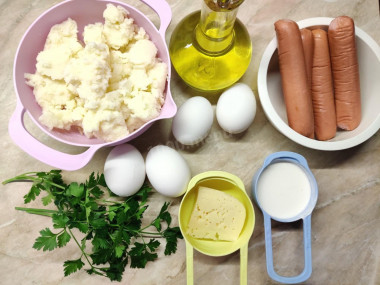
How to make a Picasso casserole? Prepare all the necessary ingredients. Puree can be taken both freshly cooked and cooked the day before. With such a "yesterday" mashed casserole will turn out even tastier. Choose sausages with the most natural composition, without mechanical deboning meat and flavor enhancers. Pre-release the sausages from the individual shell. It is better to take small eggs. Wash and shake the greens.
Step 2:
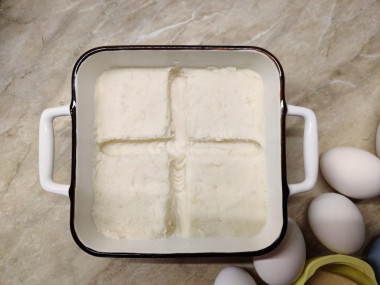
Grease the baking dish with a drop of sunflower oil. I have a square shape with a side of 17 centimeters. Put the mashed potatoes into the mold, tamping it tightly with a spatula. With the long end of a tablespoon, make two deep perpendicular grooves in the puree.
Step 3:
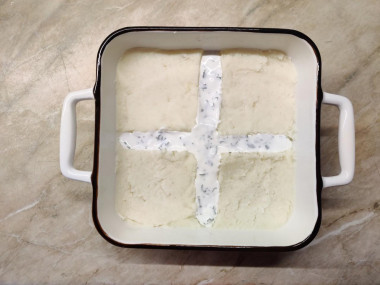
Finely chop the parsley and mix with yogurt. Pour the mixture into the grooves.
Step 4:
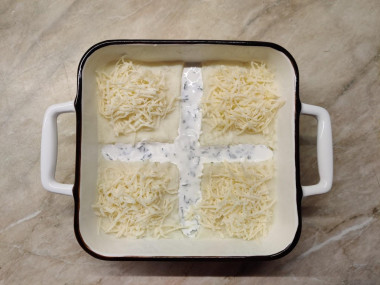
Grate the cheese on a fine grater and spread over the resulting areas of puree.
Step 5:
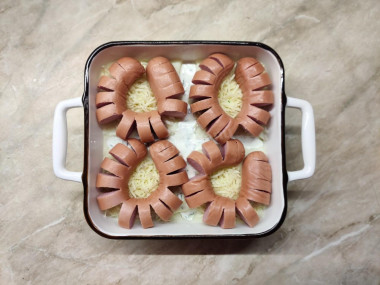
Cut the sausages along the long edge without cutting through to the end. Connect the tips, forming springs. Put it in the form. If the sausages unfold, secure their tips with wooden skewers.
Step 6:
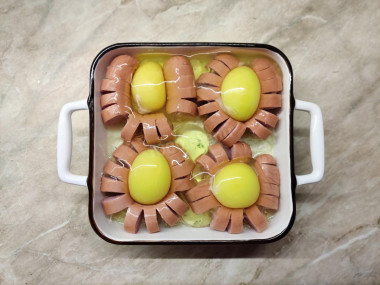
Drive an egg into the center of each spring. Try not to damage the yolk: so the casserole will turn out to be as beautiful as possible. Bake in a preheated 180 ° C oven for 30-40 minutes.
Step 7:
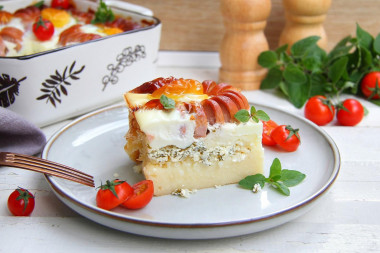
The protein should completely stabilize, that is, become white and not transparent. But the degree of readiness of the yolk can be adjusted at your discretion. You can leave it liquid, or you can, like me, bring it to full readiness. Focus on its appearance. Serve the casserole hot, with fresh vegetables. And don't forget to take out the skewers if you used them!
The baked puree here resembles the base of a potato casserole with minced meat. And in general, a very elegant and hearty dish.
Bon appetit!
Why is such an interesting name - Picasso? Because the portion pieces of this casserole turned out to be asymmetrical, not similar to each other and uneven. In my opinion, such a strong association with Picasso's work. ;-)
Keep in mind that everyone's ovens are different. The temperature and cooking time may differ from those specified in the recipe. To make any baked dish successful, use useful information about the features of ovens !
Any heat-resistant form is suitable for this recipe. If you use a silicone mold, then you do not need to smear it with butter or margarine.
Caloric content of the products possible in the composition of the dish
- Ripe potatoes - 80 kcal/100g
- Baked potatoes - 70 kcal/100g
- Mashed potatoes - 380 kcal/100g
- Boiled potatoes - 82 kcal/100g
- Potatoes in uniform - 74 kcal/100g
- Fried potatoes - 192 kcal/100g
- Acedophilin 3.2% fat content - 58 kcal/100g
- "rastishka " - 122 kcal/100g
- Danone drinking yogurt - 76 kcal/100g
- Drinking yogurt "agusha" - 87 kcal/100g
- "actimel" natural - 83 kcal/100g
- Danone yogurt with 2.2% fat content - 96 kcal/100g
- "mazhetel" - 48 kcal/100g
- Yogurt "ermann" fat - 152 kcal/100g
- Yogurt with 3.5% fat content - 68 kcal/100g
- Natural yogurt with 1.5% fat content - 48 kcal/100g
- Low-fat milk yogurt - 38 kcal/100g
- Chicken egg - 157 kcal/100g
- Egg white - 45 kcal/100g
- Egg powder - 542 kcal/100g
- Egg yolk - 352 kcal/100g
- Ostrich egg - 118 kcal/100g
- Parsley greens - 45 kcal/100g
- Vegetable oil - 873 kcal/100g
- Milk sausages - 266 kcal/100g
- Sausages "Russian" - 243 kcal/100g
- Pork sausages - 324 kcal/100g
- Canned sausages - 228 kcal/100g


